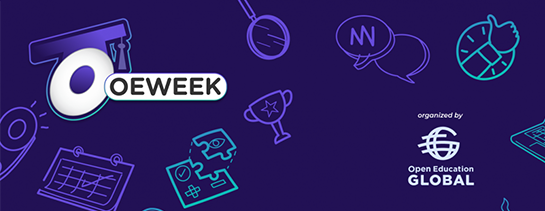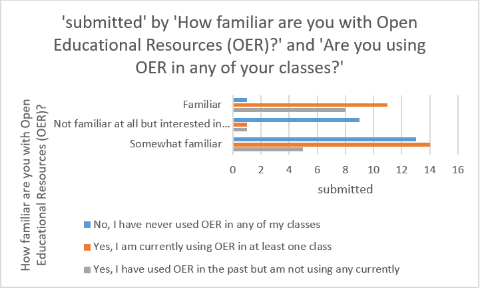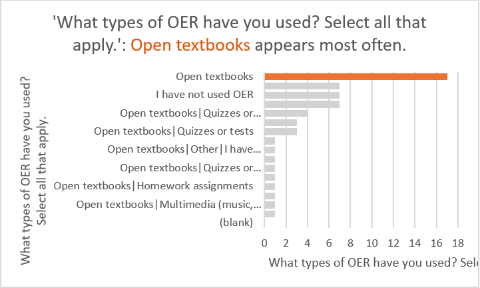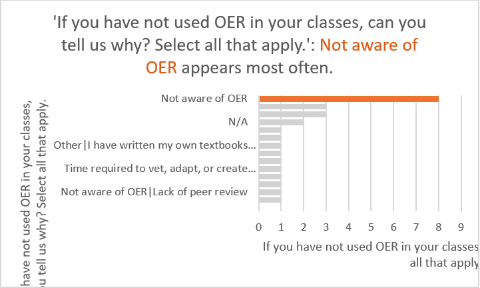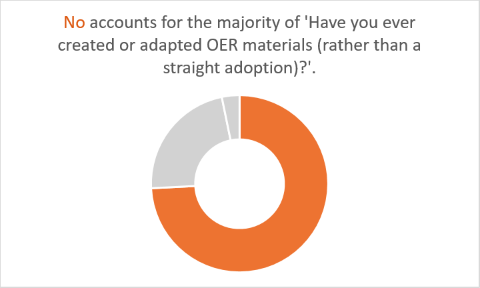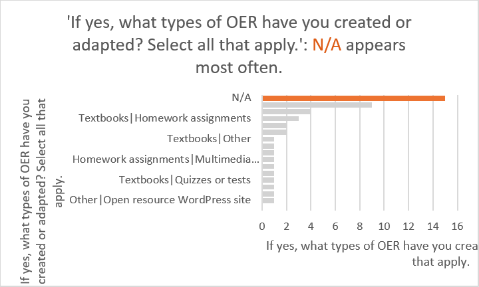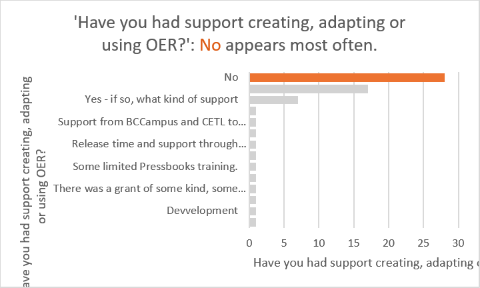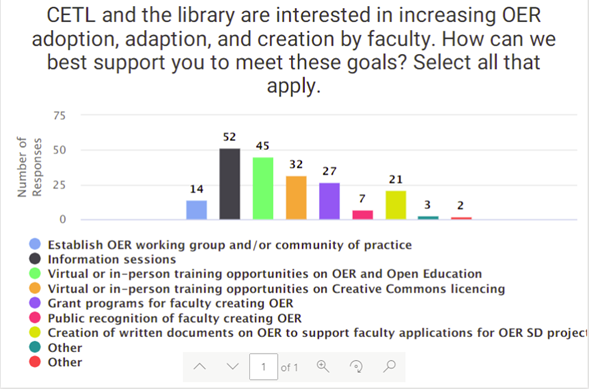Last week was Open Education week. While the Information Tables from the beginning of the week did not work out as anticipated, we ended the week with a bang and the Camosun College Open Education Recognition Awards. I thought I would share with you some brief statements about the 41 recipients for you here. A big thanks to BCcampus who provided funding for this event.
When I really think about the role of Open Education in our learning spaces, I think of Kayla Lar-Son’s (Indigenous programs and services librarian at UBC) 6Rs of Indigenous Open Education: (Indigenous programs and services librarian at UBC) respect, relationships, responsibility, reverence, relevance, and reciprocity. These concepts are not only vital to honouring Indigenous knowledge and sovereignty in our work as educators, but also key to the work we do in Open Education in general.
- When working in Open Education we must have respect for the work we do in this space, the students we are doing it for, and for the people who engage in the work.
- We have a responsibility to provide our students with affordable education and to our colleagues to support them to meet that goal.
- Building and nurturing relationships are key to collaborating and working together.
- Reciprocity is central to the ideals behind Open Education through sharing the open work we create.
- Because Open Educational Resources are flexible and can be adapted, we can provide more relevant resources and curriculum for our students.
- And we need to remember how important it is that we show reverence for the people who engage in this work – and this is what we are gathered here today to do, celebrating for the second year in a row the open education work of our faculty at the college.
This year’s recipients embody these 6Rs, as faculty members who have made profound contributions to open education at Camosun College and demonstrated an impact on student learning and student costs by utilizing, designing, or adapting open resources in their instruction.
Puja Gupta, School of Access: Puja has, until recently when she moved into the Acting Associate Dean role in the School of Access, taught Math in both the Community Learning Partnership and the Academic Career Foundations programs. She is passionate about providing her students with access to free resources, especially since her programs are tuition free, and has adapted a combination of existing Open Textbooks for her courses. I was got to know Puja through the Open Ed Sustainability project where she worked to create an extensive math test bank in the MyOpenMath platform. Puja is also very generous with her time and her open resources, sharing them with colleagues across the college.
Education and Career Planning Certificate Program (Diane Gilliland, Val Neaves, Allyson Butt), School of Access: The Education and Career Planning Certificate Program (EDCP) is a 7-week tuition-free program which provides its learners with free online readings. Diane Gilliland and Val Neaves are both instructors in the program, and Allyson Butt is the instructional assistant. In 2020, they worked together to move EDCP to fully online blended synchronous/asynchronous by adapting the BC open course-pack EDCP: Career Planning. I interviewed Diane, Val, and Allyson about their work in the EDCP program (previously BEST) and these three do amazing work together and with their learners. I also have to mention that the EDCP program is proof that community can be created online, which Diane points out is rooted in Martin Brokenleg’s work and in the work this group did to indigenize their curriculum in order to acknowledge and strengthen belonging, mastery, independence and generosity. Diane, Val, and Allyson also wanted me to recognize the assistance from Monique Brewer, Deidre Murphy, and the CETL group who helped and continue to help them to create clear, organized, accessible curriculum.
Katie Waterhouse, Anthropology, Arts & Sciences: Katie has been a user of Open Textbooks for a while now, using an open text produced by the American Anthropological Society for her Anth 260 course since 2020 and also in 2020 moved away from a textbook and is using library resources for her Anth 250 course (creating a Zero Textbook Cost model.) More recently Katie has been creating H5P interactive objects (an open learning object creation tool) to support her students’ learning in all of her courses. She has co-facilitated the H5P workshop and shared examples with me and other faculty members. Katie continues to explore OER for her other courses.
Leanne Pyle, Geoscience, Arts & Sciences: Leanne teaches Geoscience courses, including Physical Geology (Geos100) and Earth-Ocean-Atmosphere System (Geos110). She has been using Open textbooks to support her students in Geos 100 since she started at the college in 2019, using the TRU Online Physical Geology open text, and switched over her 110 course to all open texts, combining pieces from several open textbook, in 2020. Like so many faculty we are celebrating here, Leanne’s work has largely gone unnoticed, until today.
Susan Chen, Math and Statistics, Arts & Sciences: Susan is passionate about providing high quality Open Educational Resources for her students and 10 years ago discovered and began using an Open textbook (Open Intro Statistics) and online homework system (My Open Math) for her STAT 116 course. Her goal for the near future is to, after many years of searching, find an open textbook for another statistics course or to create a zero-cost course pack for the students. Susan’s Chair Patrick Montgomery also had this to say “The work to support an evolving discipline such as statistics is ongoing, as new examples appear regularly and can only be included in the classroom by either buying new and expensive textbooks or by spending the time and effort to incorporate the information into in-house course packs. Susan is a department leader in building online resources for her classes and has made Statistics even more affordable.”
Patricia Wrean, Math and Statistics, Arts & Sciences: Pat has been a determined and steadfast supporter of her students, and has actively looked for ways to make her classes more accessible and at minimal cost to the student. According to her Chair Patrick Montgomery, the WeBWorK system she uses provides free access to students to learn through online homework problems, but it needs a knowledgeable support person to make this work. Pat has been that person and her knowledge and expertise is appreciated by her students and colleagues.
Stephanie Ingraham, Physics, Arts & Sciences: Stephanie teaches in the Physics department, where she is also the Chair. I had the pleasure of working with Stephanie for the Open Education Sustainability project where she worked on creating an Open Textbook for Physics of Medical Imaging and Radiation Therapy. While the MRT course she created this for has been altered, the true joy of creating open textbooks is being able to adapt them to different courses, so Stephanie is hoping to take some of what she created and use it in future teaching. She is also a big supporter of her faculty in using OER for their own courses.
Randal Tonks, Psychology, Arts & Sciences: Randal has been using the Introduction to Psychology open textbook by Stangor and Walinga for 10 years to support his section of Psychology 130, impacting approximately 80 students per term. He also offers it as an optional textbook when teaching Psyc 100A and 100B at UVic. In addition, Randal has helped to create an instructor’s test bank to support this text – work that is very important since one of the stumbling blocks faculty face with adopting open textbooks is the lack of testing materials and other ancillary resources.
Michelle Clement, Marketing, School of Business: Michelle has taught Marketing in the School of Business since 2004. I got to know Michelle during the Open Education Sustainability project when I supported her with adapting an open textbook, The Power of Selling, in Pressbooks. The textbook was over 600 pages long and 10 years out of date, so Michelle had her work cut out for her, but she reduced the text to just over 200 pages, added images to make it a bit more engaging, and brought the content into our current world. The year after she adapted the text, Michelle added supplementary material for faculty including PowerPoint slides and in class activities for each chapter to encourage them to adopt the book. Michelle has adopted and adapted many open textbooks over the years, and continues to do so, but she also integrates library resources and her own materials into the mix, and generously shares her course materials with her colleagues.
Adventure Education, Centre for Sport and Exercise Education (John Telford and Michael Pardy) and Sport Management, Centre for Sport and Exercise Education (Charles Parkinson, Brianna Waldman, Chris Psutka, Anthony Pluta, Robert Bettauer, Michael Suraci, Graham Thomson, Simon Cass)
I am really pleased to be recognizing these two programs in the Centre for Sport and Exercise Education. When I was frantically emailing chairs to find out who at the college is teaching ZTC courses for the strategic plan metrics, Charles Parkinson emailed to say that two of his programs were ZTC: Sport Management (20 courses) and Adventure Education (10 courses), whose instructors use a combination of academic articles, research studies, guest experts, applied learning, and other vehicles to support their courses. We have talked a lot today about creating OER and Open Textbooks, but courses can also be Zero Textbook Cost by using library resources, online resources, course packs in D2L, in addition to Open Textbooks, especially if there is no one textbook that meets your course needs. And this is another great example of this work happening without anyone at the college really knowing about it. Thanks for all of your work!
Liz Morch, Dental Hygiene, School of Health and Human Services: Liz has taught in the Dental Hygiene program at Camosun since 1990! I got to know Liz during the Open Education Sustainability project when I supported her with creating a WordPress site to house five modules covering basic topics in nutrition. This open site was created not only to support her DHYG328 Nutrition course (giving students the option to learn the content at their own pace), but also for anyone who might need access to academically sound resources related to nutrition, knowing that this is a subject covered in many programs at Camosun and beyond. Liz is an education innovator and mentor to Camosun faculty who are interested in exploring creative approaches to teaching, and a huge champion of Open Education, supporting her students in whatever way she can – and providing free course materials is definitely one way in this world of escalating costs to support our students.
Brian Coey, Sheet Metal, Trades and Technology: Brian formerly taught Sheet Metal and is now the Chair of Trades Development at Camosun. I got to know him during his work with the Open Education Sustainability project, but that was not Brian’s first BCcampus funded foray into Open Education. In addition to the work he did on Camosun’s project, he also worked on Sheet Metal program materials with Okanagan College. Like many of the trades, updated resources and textbooks were just not available for Sheet Metal, and Brian wanted to create materials to support the four Levels of Sheet Metal apprenticeship training. He has since completed Pattern Development for all 4 levels including videos and animations and is acknowledged as an author and reviewer of the open Trades Access Common Core series, which contains 23 books that are used across the province for entry-level trades training in various apprenticeship programs. Brian was a recipient of a BCcampus Award for Excellence in Open Education award in 2021.
Kyle Broad, Sheet Metal, Trades and Technology: I was so pleased when Kyle was nominated for an open education recognition award. Kyle is the Chair of Motor Vehicle and Metal Trades and as a chair, he is the Workplace leader for faculty in a large number of disciplines. Ken Kosik, the Associate Dean of Trades and Technology, said “While Kyle has not himself been directly involved in the development of OER, he is very supportive of faculty in his area, who are engaged in OE resource development, particularly for Brian Coey, for example adjusting schedules and bring in temporary faculty to allow Brian to pursue OE opportunities.” Kyle is unable to be here today, but I am happy he approved his nomination for this award, because having leadership in our college supporting faculty is what makes Open Education work possible.
Plumbing and Pipe Trades Department, Trades and Technology
I was so happy this group was nominated. I have been very aware of their work for a long time, especially through working with Rod Lidstone when I first started at Camosun. Rod and Plumbing and Pipe Trades, are responsible for a number of early-created Open Textbooks in the BCcampus Trades collection. I want to quote from the Dean of Trades and Technology, Eric Sehn, and the department Chair, Darren Vaux. Eric says “The entire Plumbing/Pipe department Faculty have been trailblazers in Open Education for years. Rod Lidstone (now retired) was our resident expert and completed a number of contracts for BC Campus. The current Chair is Darren Vaux, who also has developed distributed delivery materials in the past with CETL.” And from Darren “As you are aware, Rod is the reason that we have had so much success with Open Ed Resources, both in their creation and adoption, for our trades. Rod is the one who had the foresight to pioneer and navigate all the awesome things that we get to do here at Pipe Trades. I am fortunate to have taken over an amazing program that we are all very proud of. Thank you again for the recognition.”
The Plumbing and Pipe Trade Department is Al Paterson, Alasdair Reid, Andrea Durdle, Andy Wilson, Darren Hall, Darren Vaux (Chair), Dennis Morris, Derek Meadows, Josh Stull, Landon Martin, Robert Medwid, Rodney Lidstone, Ron Perkin, Steve Nixon, Steve Bitschy, Flynn Boles, James Smyth
And finally, we recognized Gwenda Bryan, a librarian here at Camosun. Open Education has much of its roots in librarians and their support for open access resources, and the librarians here are no exception – every program at Camosun has a liaison librarian and they work with faculty to find ZTC and open options to support their courses. We wanted to recognize Gwenda this year for her work on the new Open Education LibGuide and many other advocacy pieces with me, faculty, and students in spite of being extraordinarily busy.

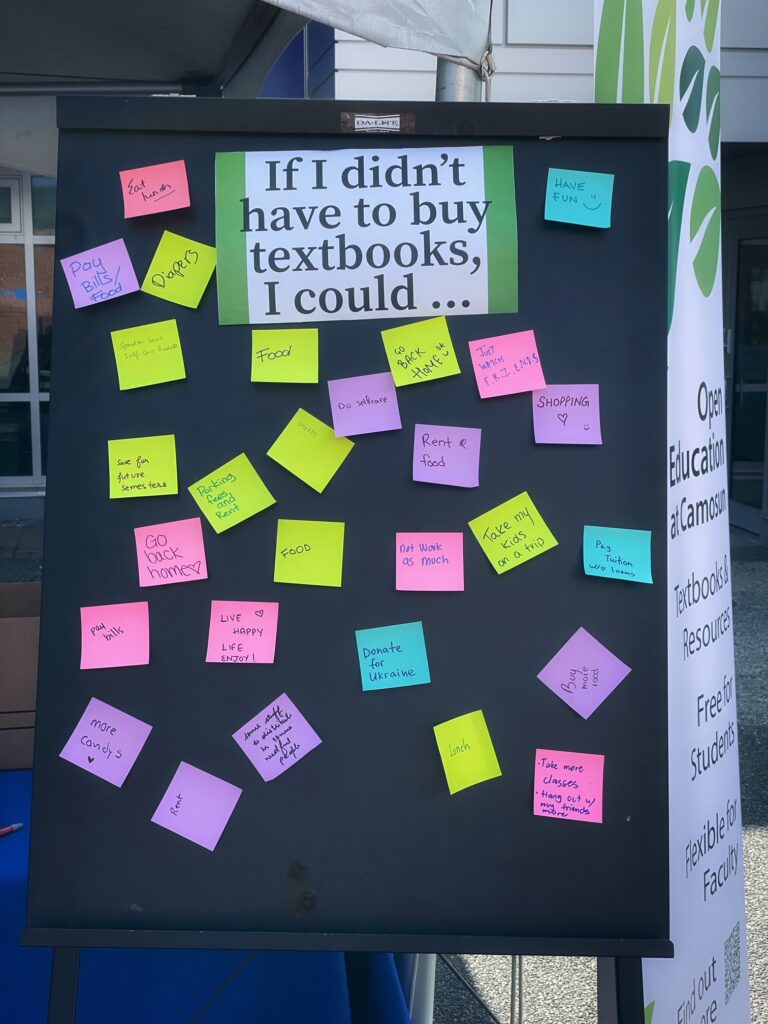
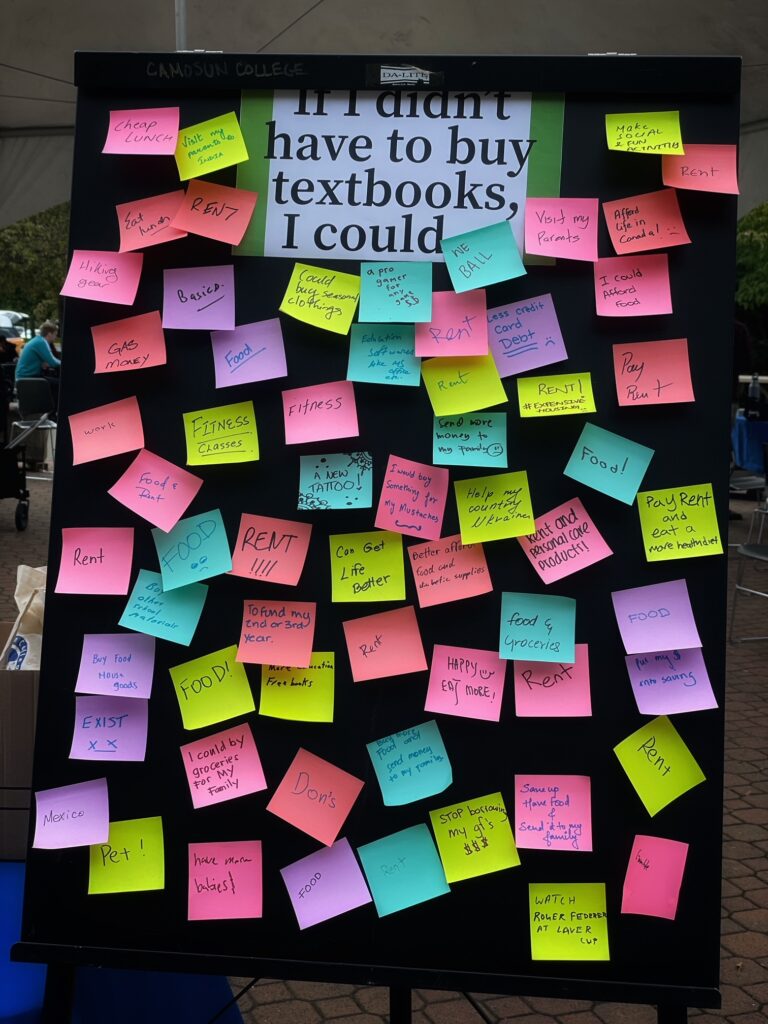
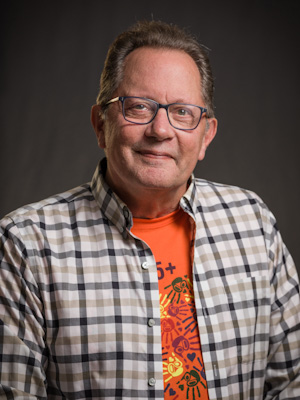 This year, we recognize Charlie Molnar, Biology, for his work revising, adapting, and creating Open Educational Resources since 2015. Charlie began his Open Education journey by working with Dr. Jane Gair, another Camosun Biology instructor, to substantially revise the Open textbook, Concepts of Biology, creating the
This year, we recognize Charlie Molnar, Biology, for his work revising, adapting, and creating Open Educational Resources since 2015. Charlie began his Open Education journey by working with Dr. Jane Gair, another Camosun Biology instructor, to substantially revise the Open textbook, Concepts of Biology, creating the 